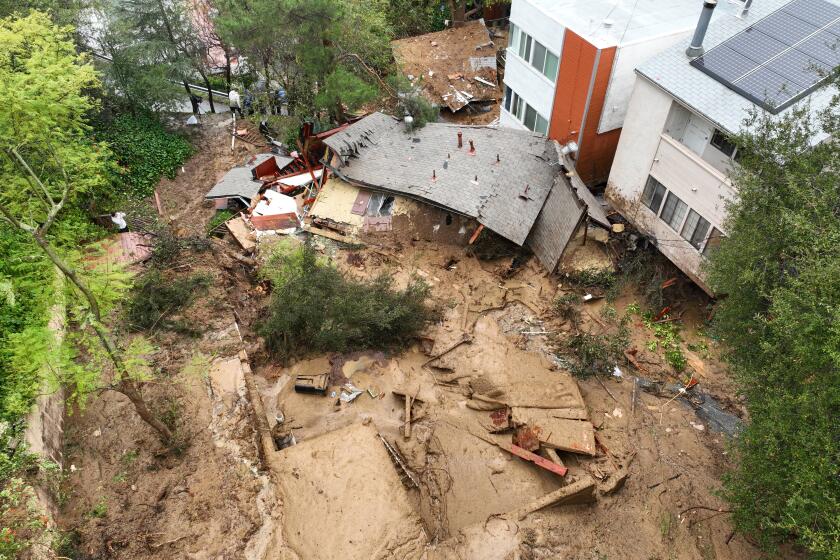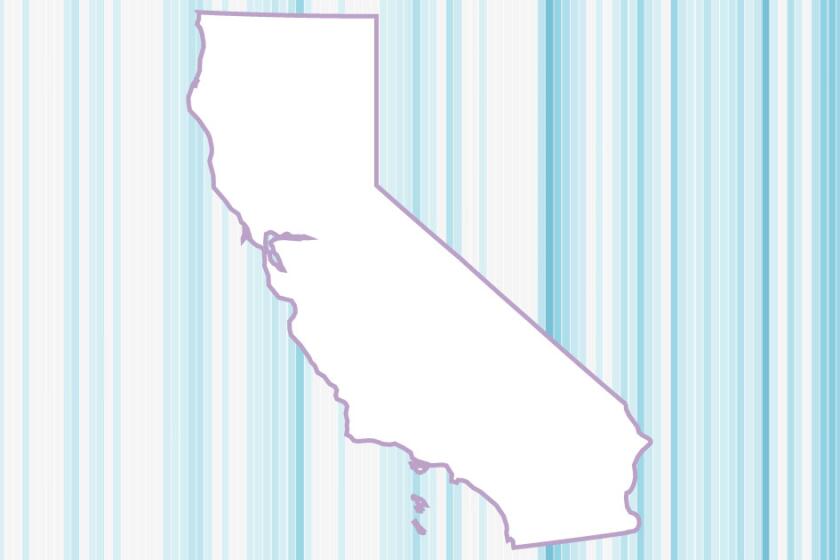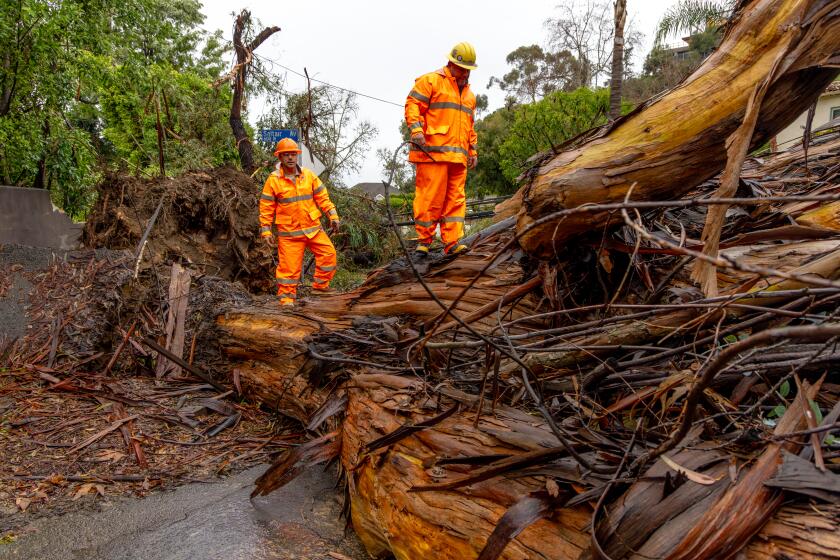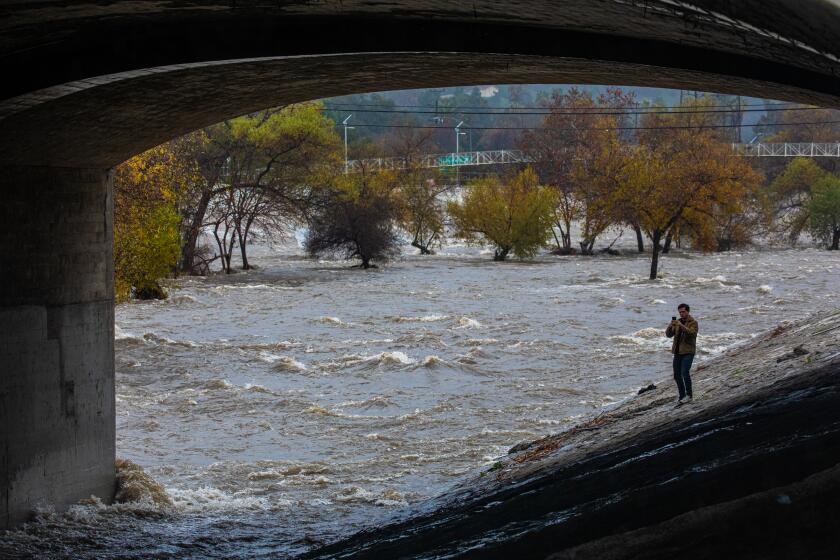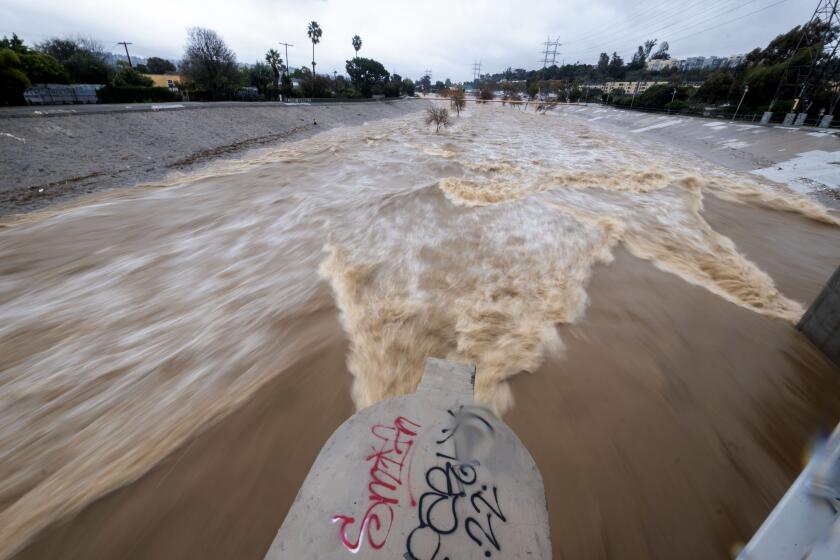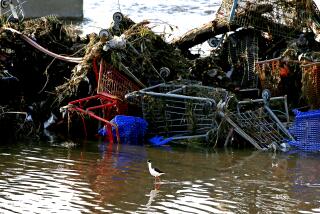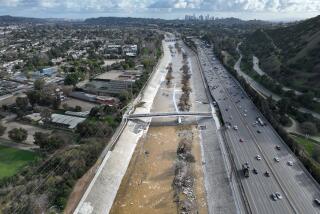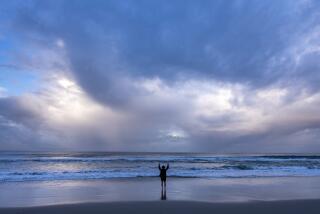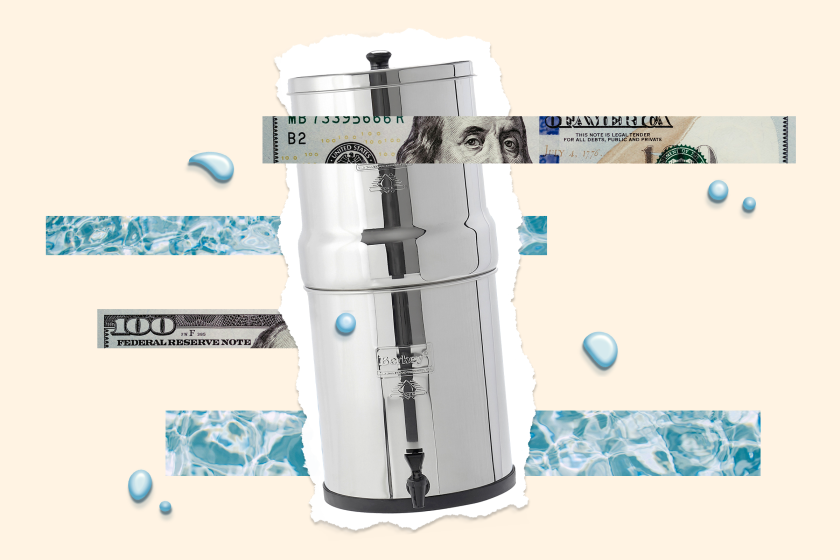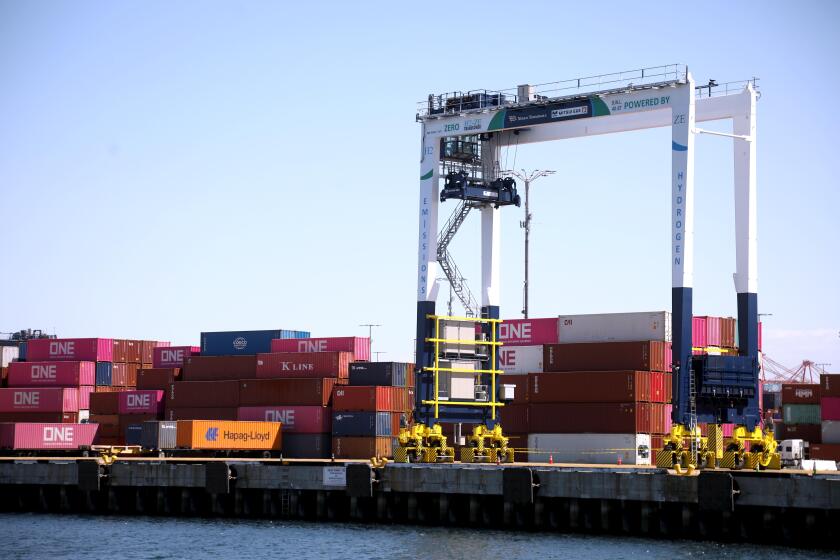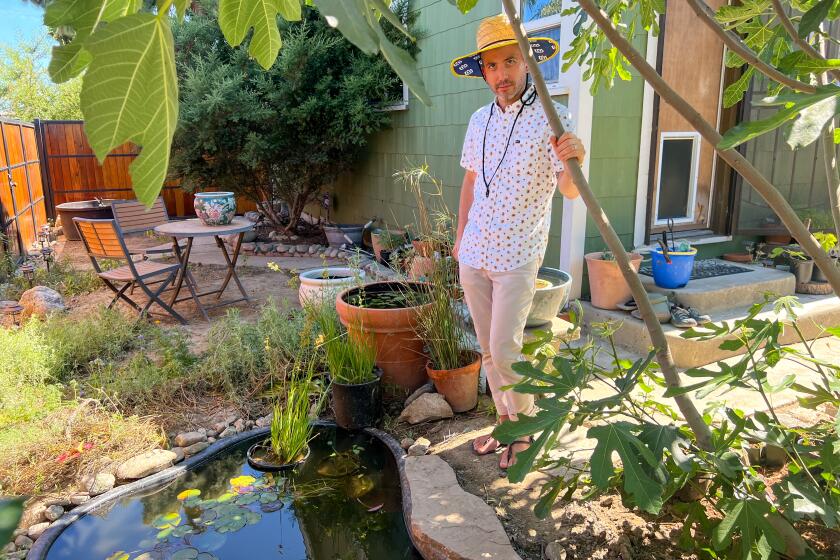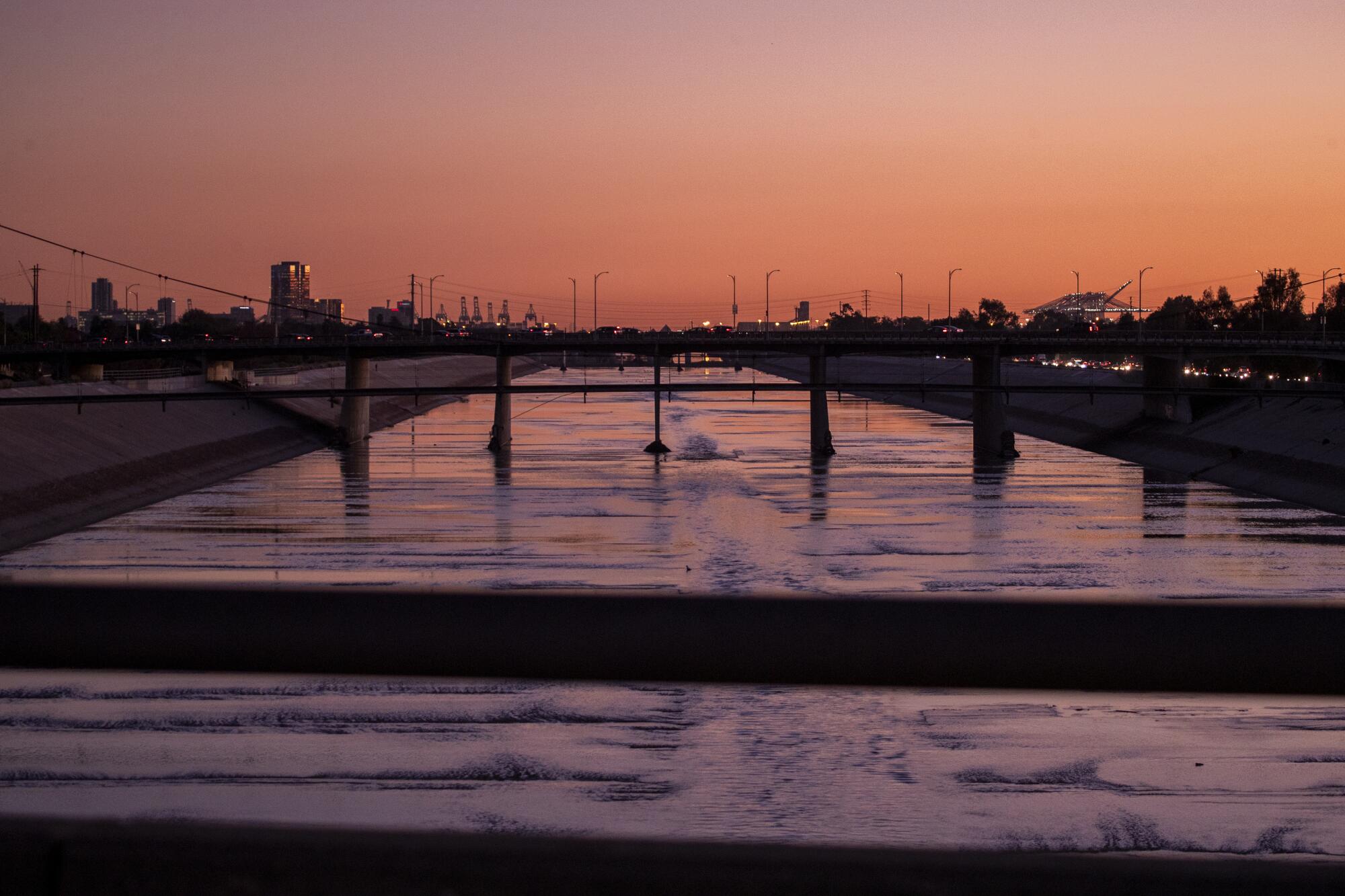
As intense atmospheric rivers become more common in a warming world, so too do questions about stormwater capture in Los Angeles. Each year, when rain pours down and the L.A. River roars back to life, Angelenos want to know how much of that water is being captured and stored — and how much is washing out to sea.
The monster storm that hammered Southern California this week dropped billions of gallons of rain, but as much as 80% of that water was whisked into the Pacific Ocean, experts say.
Aggressive and impactful reporting on climate change, the environment, health and science.
For residents who only recently were asked to conserve unprecedented amounts of water, such a loss can be confounding. But capturing rainfall is only one part of the L.A. River’s job. It is also a flood control channel that is critical to protecting lives and properties when stormwaters surge.
“It’s a delicate balance between capturing that water for beneficial use later on and keeping the public safe — making sure that people can get to work and that children can get to school,” said Kerjon Lee, a spokesman for the Los Angeles County Department of Public Works.

Subscribers get exclusive access to this story
We’re offering L.A. Times subscribers special access to our best journalism. Thank you for your support.
Explore more Subscriber Exclusive content.
Indeed, without the Los Angeles River and other local channels such as Ballona Creek, more of that stormwater would have ended up in streets and neighborhoods. The waterways were channelized nearly a hundred years ago in response to devastating regional flooding.
“We developed much of L.A. too quickly and too close to the floodplain, and so we had massive floods — not just in the L.A. River but the San Gabriel and others — in the ’30s, and even some before the ’30s,” said Bruce Reznik, executive director of Los Angeles Waterkeeper.
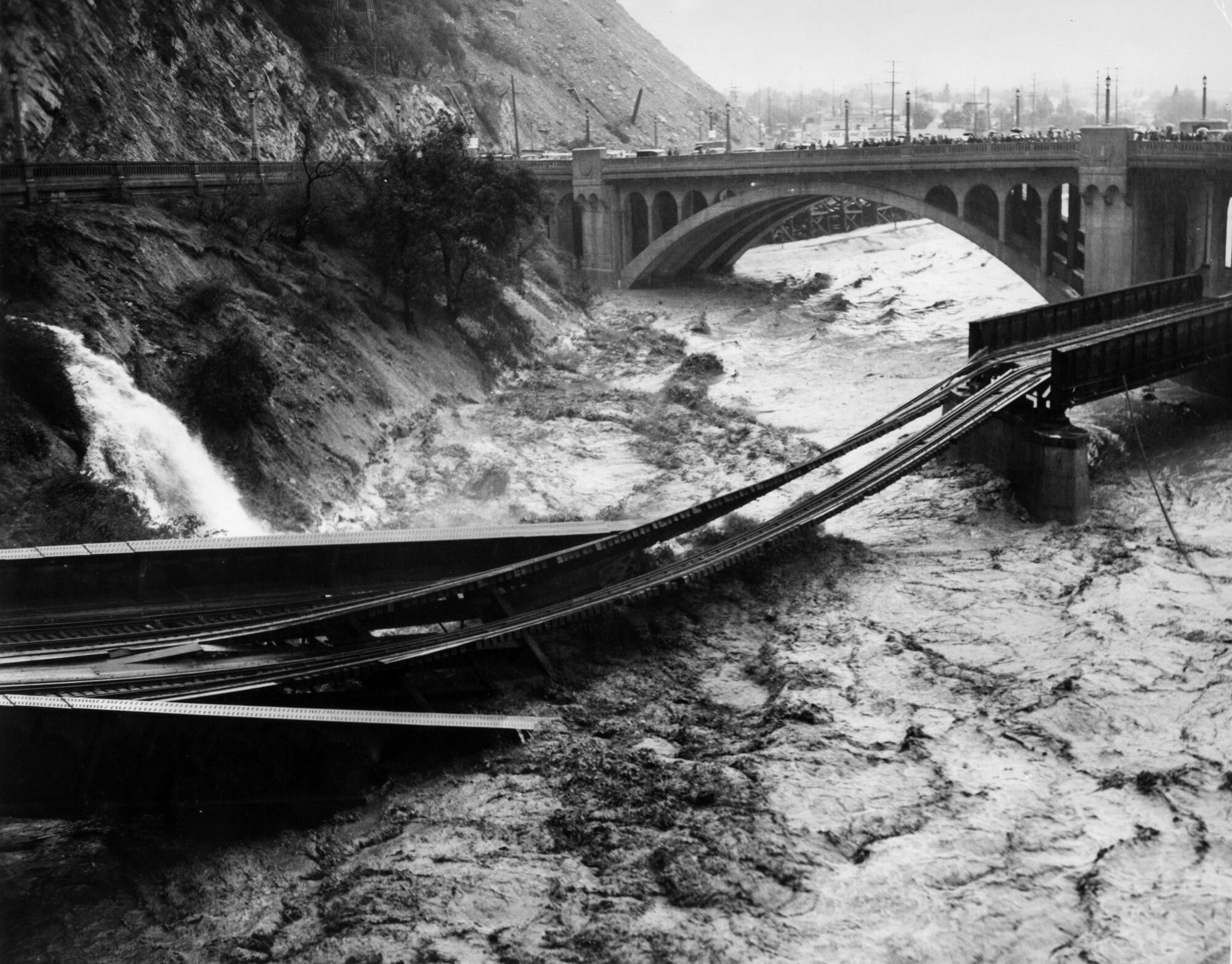
Once a free-flowing waterway, the L.A. River flooded repeatedly as the city was developed. A 1914 flood caused an estimated $10 million worth of damage; the L.A. Times reported that the city was “in the grasp of swirling water.”
On New Year’s Day in 1934, a storm once again unleashed torrents from the San Gabriel Mountains. The river and its tributaries swelled, inundating communities around La Crescenta and claiming dozens of lives and houses.
The same flood-control system that protected L.A. from the atmospheric rivers also saw tens of billions of gallons of stormwater flush to the sea.
And in 1938, a great deluge changed the city and its river forever. Engorged by two back-to-back storms, the waterway roared as flows reached the remarkable rate of 99,000 cubic feet per second. Water soon poured into low-lying areas from downtown to Long Beach, sweeping away more than 5,600 structures and killing more than 110 people.
In response to the $78-million catastrophe, the people of Los Angeles called for greater flood control measures, and the U.S. Army Corps of Engineers began encasing the channel in concrete. Experts credited the work with preventing floods in 1969 and 1980, when the river saw even higher flows than it had in 1938.
The storm fed off of unusually warm waters as it grew. It also reached “bomb cyclone” status as it neared California.
In that regard, Reznik said, the system “is working as intended.”
But that doesn’t mean there’s no room for improvement. The Department of Public Works has captured about 11,200 acre-feet, or 3.6 billion gallons, of water from the latest storm — enough for use by about 89,600 people for a year. The agency has captured about 72,500 acre-feet since the start of the water year, Oct. 1.
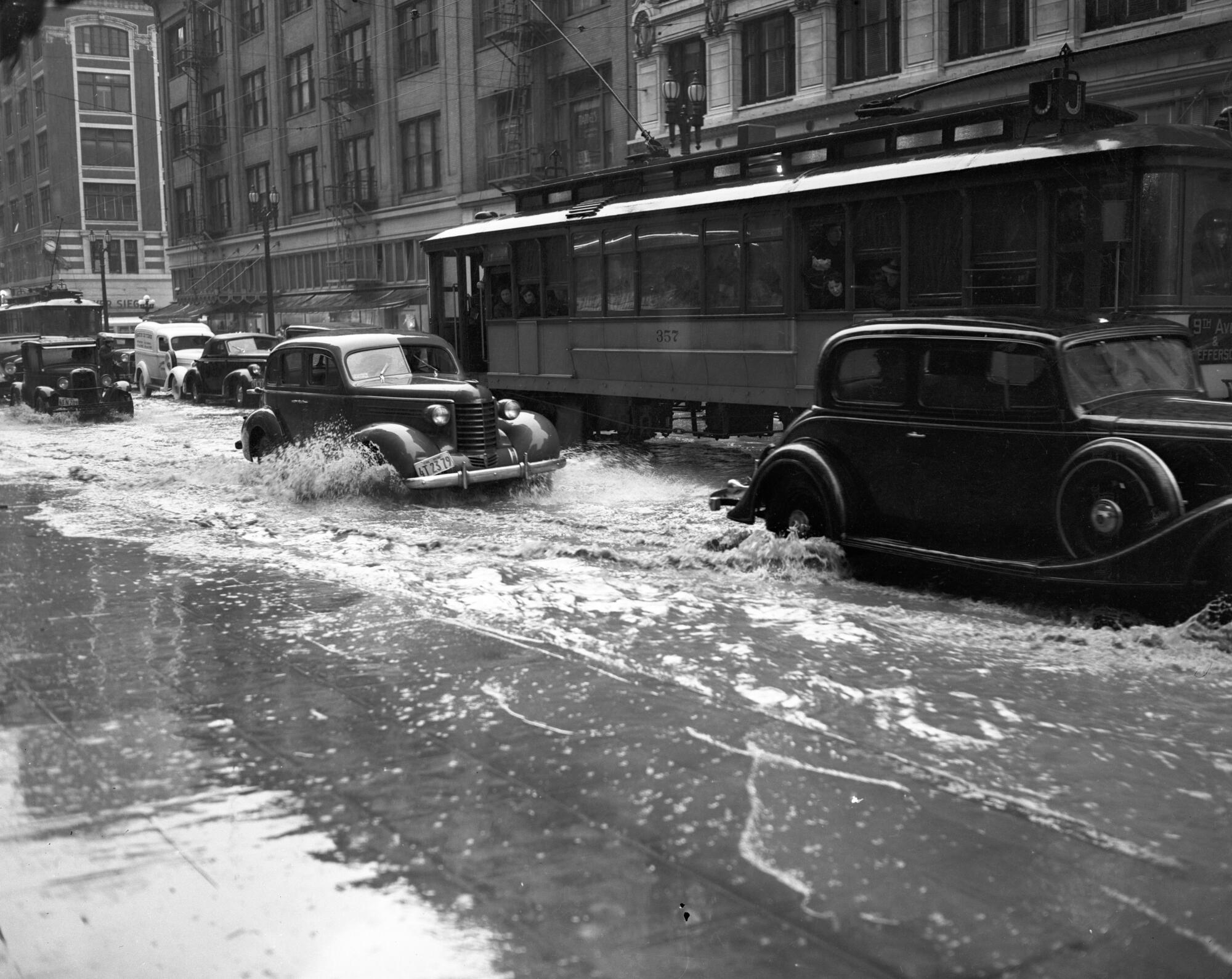
Most of that comes through groundwater recharge, or opportunities for water to spread and seep into aquifers. Public Works also maintains 14 major dams in the mountains above L.A., as well as five others operated in conjunction with the Army Corps. During the summer, water is released from those dams into spreading grounds for percolation.
Subscriber Exclusive Alert
If you're an L.A. Times subscriber, you can sign up to get alerts about early or entirely exclusive content.
You may occasionally receive promotional content from the Los Angeles Times.
The maneuvers are a dance “between flood protection and stormwater capture,” according to Lee. “We want as much capacity as possible in those dams to capture the water and try to hold it up there in the dams for as long as we can, without threatening lives and property downstream.”
But Reznik and other experts said Los Angeles can and should be more ambitious.
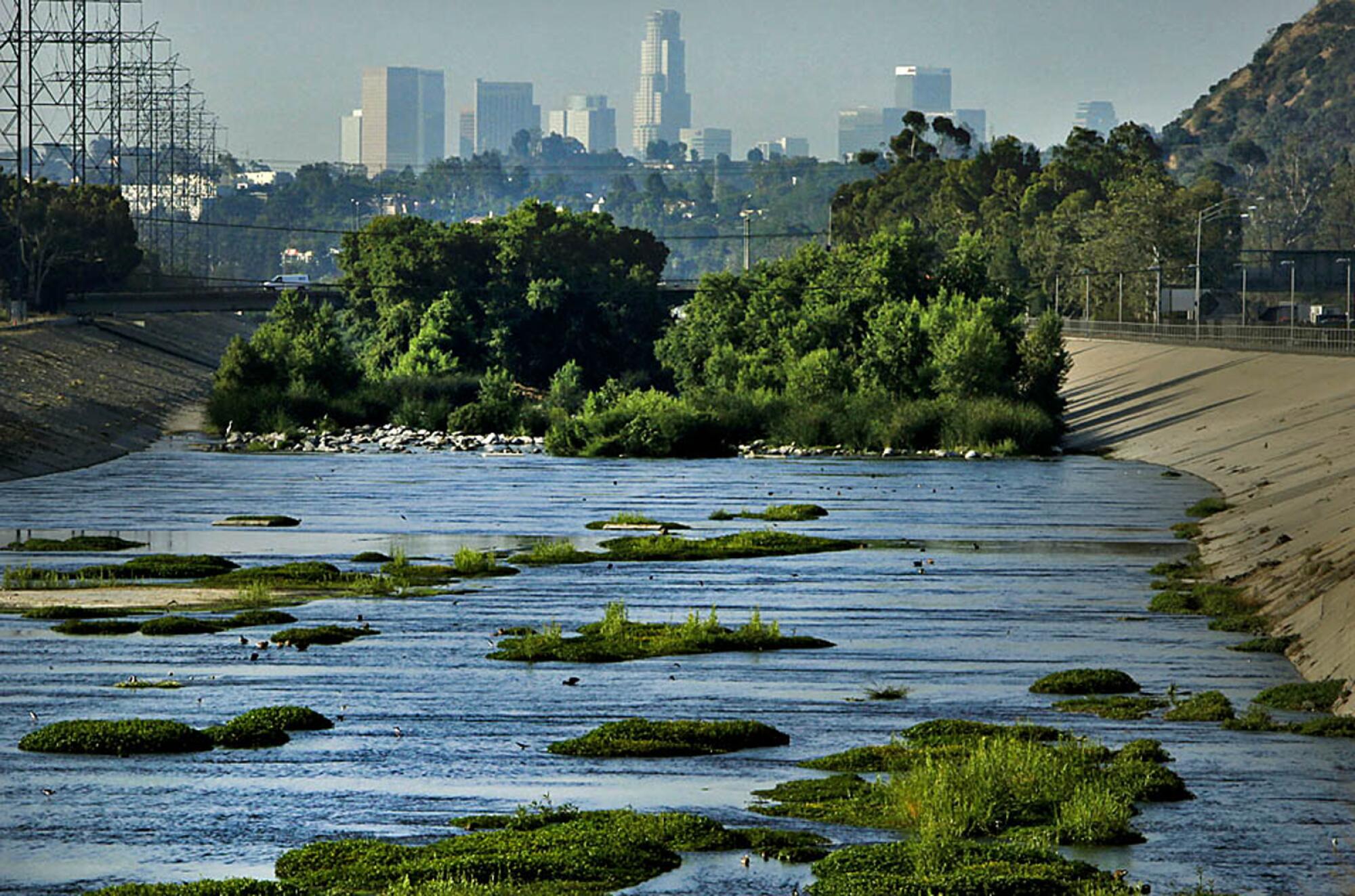
In 2018, voters approved Measure W, a tax aimed at capturing and cleaning more stormwater before it reaches the ocean. That initiative, later dubbed the Safe Clean Water Program, allocates $280 million annually to stormwater projects, including those geared toward reducing asphalt and hardscaping that prevent water from seeping into the earth.
A report on the program last year found that its progress has been slow, with about 30 acres of green space added across the 3-million-acre county in the first three years.
“Having 90% of runoff heading down the L.A. River isn’t good from a water supply — isn’t good from a pollution, isn’t good from a public safety — standpoint,” Reznik said. “And so I think that’s where we’re going to really have to ask some hard questions about how we can do a better job.”
As Californians face non-stop rain from an atmospheric river this week see how rainfall totals in your area compares to other regions and previous years.
Los Angeles imports the vast majority of its water from other places, including Northern California, the Owens Valley and the Colorado River. But as drought and warming make those resources less reliable, the need for local supplies has never been more critical, Reznik said.
What’s more, the increasing likelihood of extreme storms — such as this week’s atmospheric river or Hurricane Hilary in 2023 — underscores the urgency of the work. The latest storm was the third “thousand-year” event — one with a 0.1% likelihood of occurring in any given year — to hit Southern California this winter.
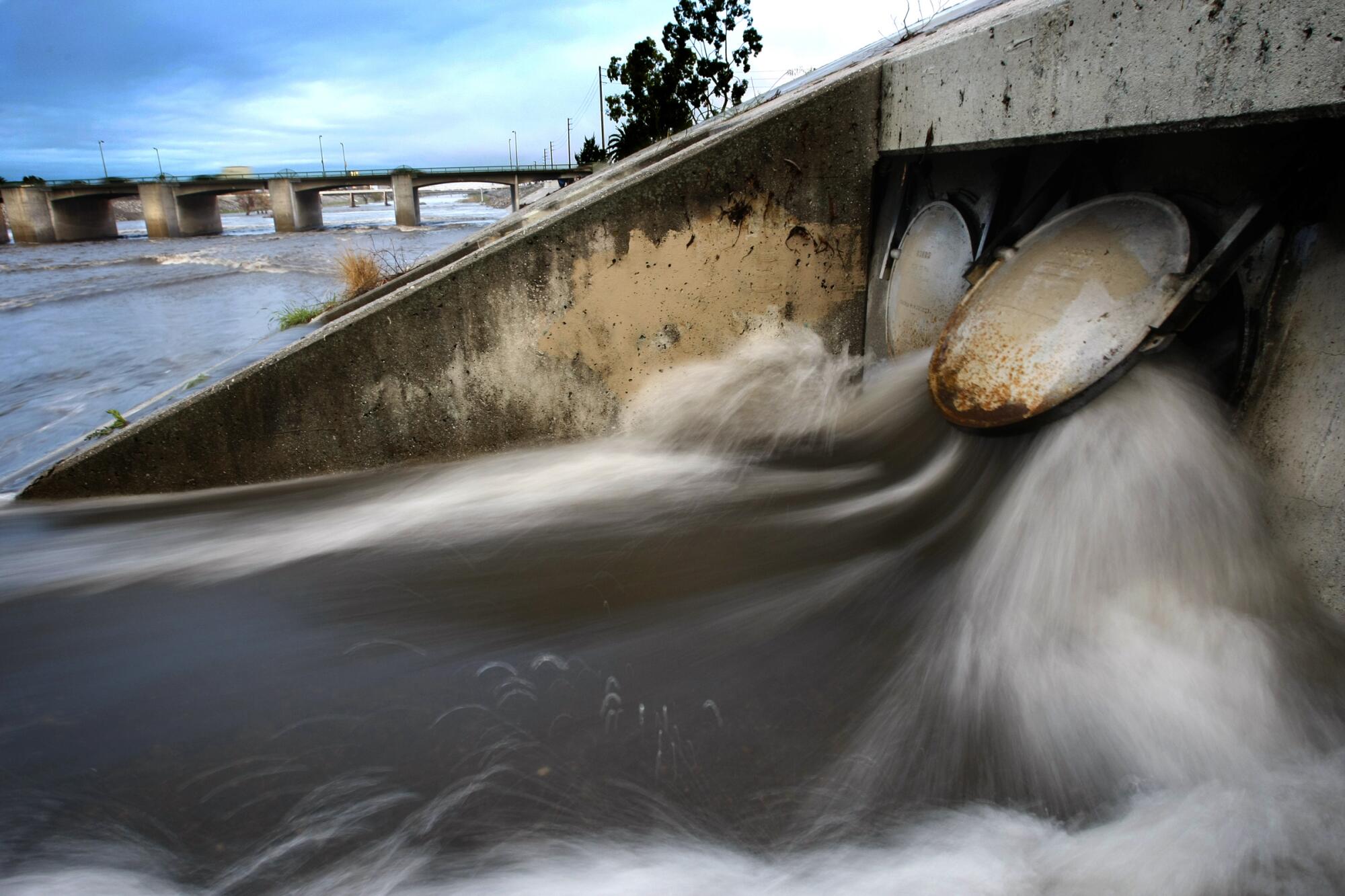
That’s a problem, because most of California’s water systems were built for “hundred-year” storms, or rain events with a 1% likelihood of occurring, said Anne Lynch, a civil engineer and water management expert with GHD, a consulting firm.
“We’re living off of our grandparents’ investments in our water infrastructure,” she said. “It’s time for us now. We’re all going to have to pay for the future, to address climate change and the degradation of our existing systems as they reach the end of their useful life.”
The good news is that L.A. has the funds to make good investments in stormwater capture, she said.
Measure W includes a variety of efforts to “find ways to incentivize people to put permeable pavers in their driveways and just do different projects all over the L.A. Basin,” Lynch said. “We’re kind of taking it in small snippets, but all of that manages to capture flow, recharge it to the groundwater and also helps with seawater intrusion and a whole host of other things.”
California was hit by a monster atmospheric river storm that killed at least nine people, left record rainfall and caused mudslides in the Southland.
Measure W has seen some success, such as the East Los Angeles Sustainable Median Stormwater Capture Project, which is helping to infiltrate approximately 7.1 million gallons of runoff in the Rio Hondo watershed near Montebello. The project also provides above-ground improvements, such as jogging paths, trees and drought-tolerant landscaping.
County officials said it could take three to five decades for Measure W to reach its goal of capturing 300,000 acre-feet, about 98 billion gallons, of water annually. But during last year’s remarkably wet winter, the county exceeded expectations and captured 628,508 acre-feet, according to Public Works.
“Not every year is going to be last year, but capturing enough water for half the population for a year shows what is potentially doable,” Reznik said.
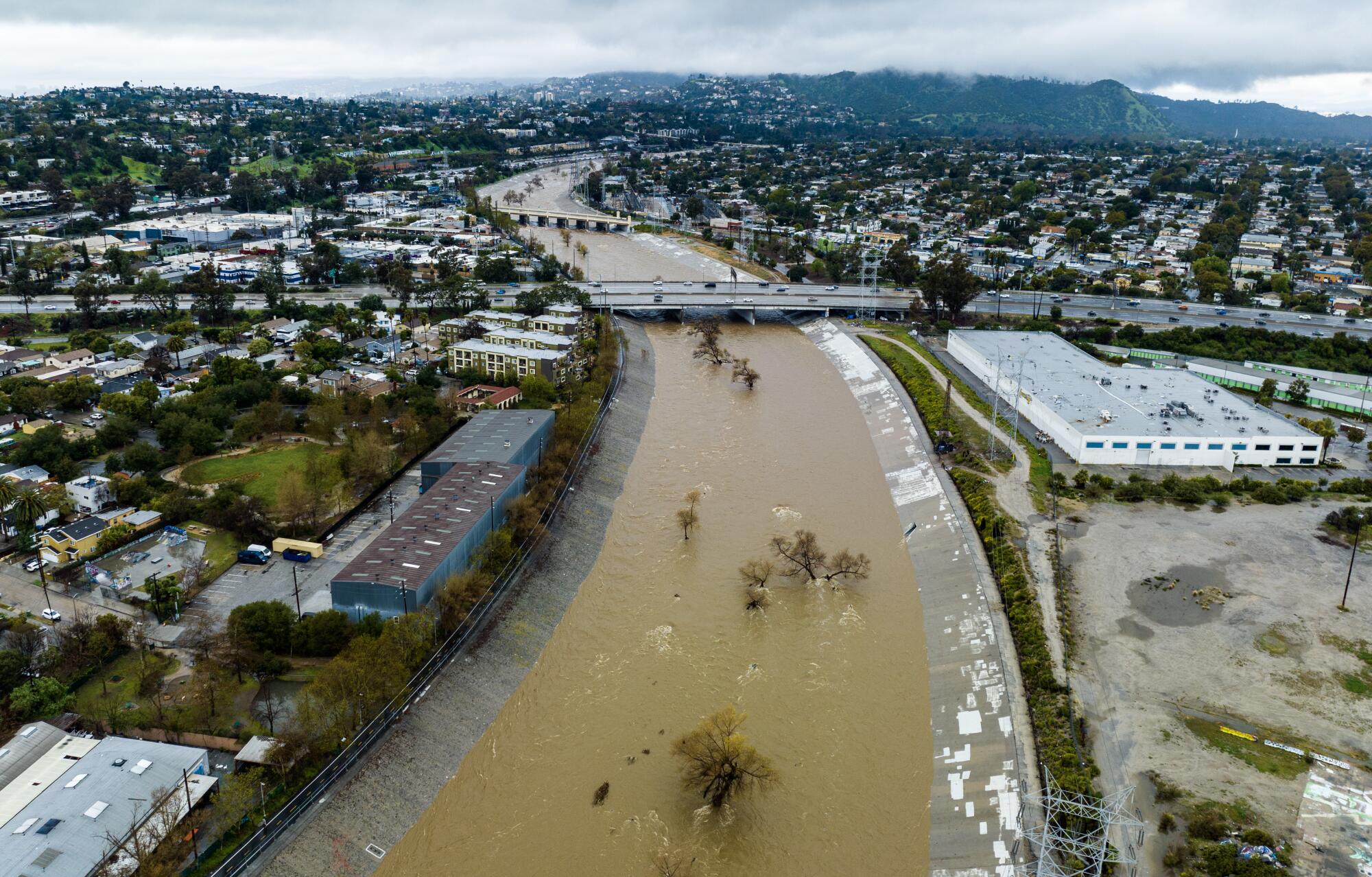
There are other regional projects underway, including new spreading ground facilities from the Los Angeles Department of Water and Power, “which will all be contributing to the groundwater locally and future drinking-water supply in Los Angeles,” Martin Adams, the general manager, said during a news conference this week.
Only 30 acres of L.A. County’s 3 million acres have seen new green space added under the Safe Clean Water Program, a new report found.
The Metropolitan Water District of Southern California, a massive regional wholesaler, has also been monitoring flows from the storm, according to spokeswoman Rebecca Kimitch. Although the MWD does not directly manage or store local runoff, its 26 member agencies typically capture about 1.1 million acre-feet of stormwater each year, she said. About 500,000 acre-feet are sent to the ocean.
“On average, about half of that flow to the ocean happens over three days of the year, during large storm events like this,” Kimitch said. “During such storms, the flows are so fast, it can be difficult to capture, and the priority is flood control.”
The latest atmospheric river parked itself over Southern California on Sunday and delivered 60% of L.A.’s average seasonal rainfall in just three days, according to the National Weather Service. Downtown L.A. received a total of 8.51 inches Sunday, Monday and Tuesday — its second-wettest three-day run since official records began in 1877. The highest three-day total was 9.21 inches, during the 1938 flood.
This week’s storm left a trail of chaos, including freeway closures, submerged vehicles, landslides and evacuations. The L.A. River raged; videos show swirling brown water roaring through the channel. On Monday afternoon, the Los Angeles Fire Department rescued a person who was swept away in the river’s rapid waters.
“The banks of the river are not — and I repeat — are not the place to be during the storm,” Chief Kristin Crowley said during a news conference Tuesday. “The L.A. River is full and will continue to flow with high intensity today.”
Los Angeles County flood control network withstands punishing rains -- for now
Yet the river has largely held — absorbing the near-record precipitation from the storm, thanks to extensive preparations, drain clearing and dredging of debris, officials said. Still, some expressed concern that it can be pushed only so far.
“The system can handle multiple atmospheric rivers, as long as they have some spacing between them,” Dena O’Dell, a spokeswoman for the U.S. Army Corps of Engineers, told The Times. “When they are back-to-back without a break, the system could be tested.”
While the county is investing in stormwater capture, such investments are in a race against upstream development that is creating more impermeable areas and increasing flows — not unlike the conditions that led to the floods in the last century.
Lynch, of GHD, said creating more permeability and stormwater capture capabilities could help keep history from repeating itself, as it will enhance the system’s flexibility by creating more places to put water.
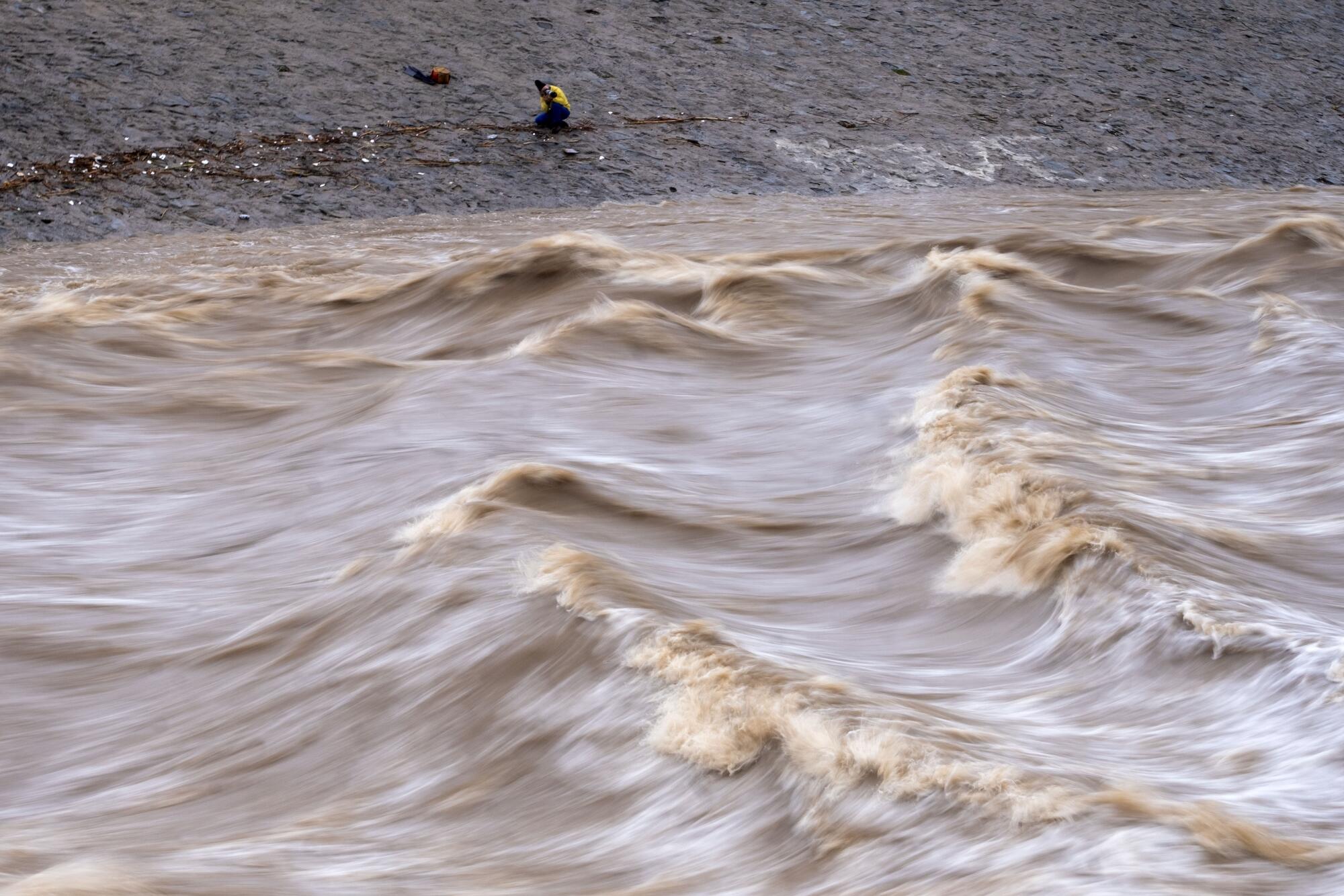
“It’s a really good sign that we’re not doing things just for one benefit anymore,” she said.
For now, however, there are billions — if not tens of billions — of gallons of runoff that are not recharging aquifers and are continuing to pollute waterways and pose health and safety threats, Reznik said.
If L.A. can continue to reduce storm flows by creating more green space, “it sort of becomes a win for everybody,” he said.
In other words, capturing more stormwater from the L.A. River would have the dual benefit of keeping more people safe and saving them more water.
Toward a more sustainable California
Get Boiling Point, our newsletter exploring climate change, energy and the environment, and become part of the conversation — and the solution.
You may occasionally receive promotional content from the Los Angeles Times.


